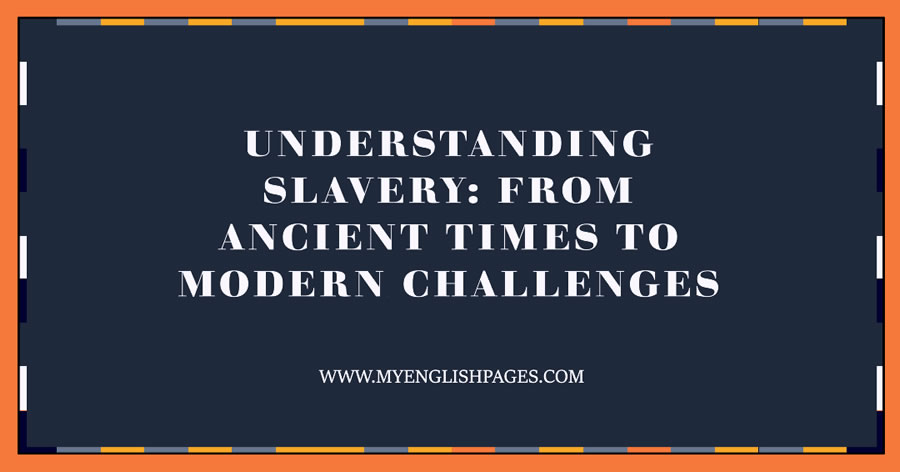Reading Comprehension: A Short History of Slavery

Develop your reading skills. Read the following short history of slavery and do the comprehension task.
Understanding Slavery: From Ancient Times to Modern Challenges
What is slavery?
Slavery is a system in which principles of property law are applied to people, allowing individuals to own, buy, and sell other individuals. A slave is unable to withdraw unilaterally from such an arrangement and works without remuneration. In a broader sense, the term slavery may also refer to any situation in which an individual is de facto forced to work against their own will. Scholars also use more generic terms such as unfree labor or forced labor to refer to such situations.
Slavery has existed in many cultures throughout history, dating back to early human civilizations. The emergence of slavery is unclear, but it is believed that this practice was not common among primitives since it normally develops under conditions of social stratification. Individuals could become enslaved through birth, capture, or purchase. Although slavery was legal in most societies at some point in the past, it is now outlawed in all recognized countries. Mauritania was the last country to officially abolish slavery in 1981. However, despite its legal abolition, an estimated 40.3 million people worldwide are still subject to some form of modern slavery, with human trafficking being the most common form.
Modern slavery takes various forms, including debt bondage, domestic servitude, serfdom, forced child labor, child soldiers, and forced marriage.
History of slavery
The history of slavery spans across numerous cultures, nationalities, and religions from ancient times to modern times. While the exact emergence of slavery is unclear, it is believed to have developed under conditions of social stratification as civilizations evolved. The practice became widespread in organized cities and farms, with evidence dating back to the Mesopotamian Code of Hammurabi (c. 1860 BCE).
Slavery spread throughout the ancient world, including Greece and other regions, and continued into the Middle Ages in Europe. The Atlantic slave trade, involving the transportation of enslaved African people mainly to the Americas, played a crucial role in the economies of Western European countries vying for overseas empires in the late 17th and 18th centuries.
Abolition of slavery
Several Western European countries were among the first to abolish slavery, despite their dependence on it to build their empires abroad. The abolition of slavery became a global movement, with slavery abolition groups advocating for its end in countries such as the United States. The Civil War in the United States, marked by President Lincoln’s Emancipation Proclamation, led to the formal freedom of enslaved individuals in Confederate states. However, racial equality struggles persisted long after legal emancipation.
Slavery in modern times
Despite its legal abolition, slavery still exists in modern times in various forms, exploiting vulnerable groups such as children, women, and the poor. This includes forced labor, human trafficking, and other forms of exploitation. The fight against modern slavery continues as a pressing issue for human rights advocacy worldwide.
Source: Wikipedia
Related Pages:


